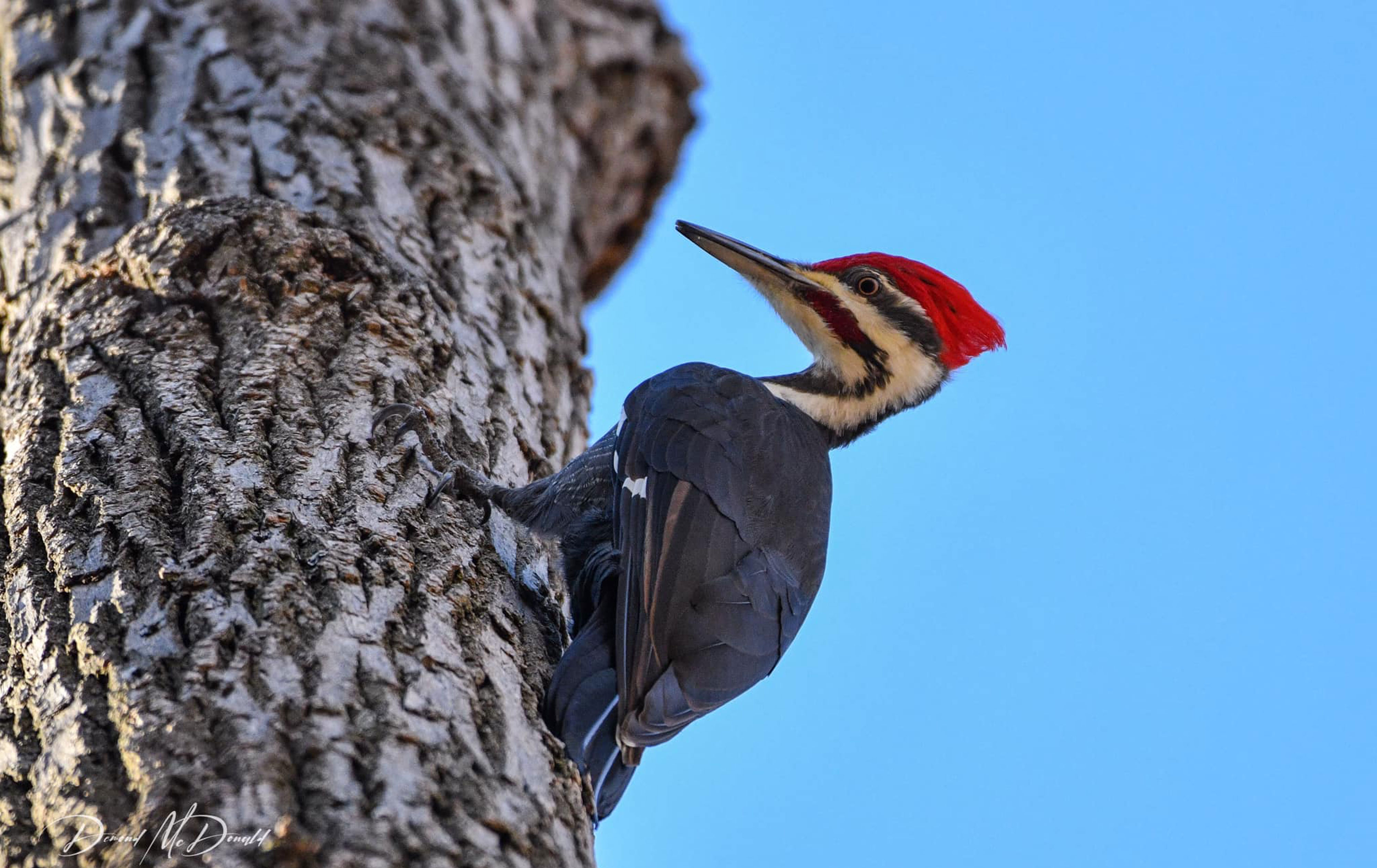Woodpeckers in Florida: Natural History, Ecology, and Preservation
Wiki Article
Discover the Interesting Globe of Woodpeckers: Every Little Thing You Required to Know
The globe of woodpeckers is a world loaded with special habits, elaborate adjustments, and a diverse variety of types. From their habitats and circulation patterns to their feeding routines and specialized anatomical functions, woodpeckers have long captivated the rate of interest of ornithologists and nature lovers alike. Recognizing the details of these remarkable birds gives a glance into the complicated interaction in between their biology and the atmosphere. As we discover the world of woodpeckers additionally, we reveal a wealth of information that clarifies their importance in environments and the challenges they deal with in an ever-changing globe.Woodpecker Habitats and Distribution
Woodpeckers populate a varied array of settings worldwide, showcasing versatility in their circulation patterns. These resistant birds are discovered in woodlands, timberlands, savannas, and deserts across various continents, demonstrating their capacity to thrive in various weather conditions. In North America, for instance, woodpeckers can be spotted in both coniferous and deciduous forests, utilizing their solid beaks to forage for bugs and produce nesting tooth cavities in trees. In Africa, particular woodpecker varieties have adapted to dry environments, such as the acacia timberlands, where they play a vital duty in regulating insect populaces.
Feeding Behaviors and Diet Plan
Among the various facets of their actions, woodpeckers exhibit distinct feeding behaviors and dietary choices. These birds are mainly insectivores, with a diet plan that consists of ants, beetles, caterpillars, and various other insects found in trees. Woodpeckers use their solid beaks to pierce into the bark of trees, probing for insects and larvae hidden underneath the surface area. In addition to bugs, woodpeckers additionally consume nuts, seeds, fruits, and sap. Some species have specialized tongues with barbed tips that assist them draw out insects from gaps in wood.Woodpeckers are recognized for their drumming behavior, which serves not just to interact with other woodpeckers but additionally to find food. The rapid drumming audio is developed by the bird pecking on powerful surfaces like dead trees or metal posts. This habits can attract pests concealed in the timber, permitting the woodpecker to detect their presence and feed on them.
Unique Adjustments for Tree Climbing
In their adept pursuit of insects hidden within tree bark, woodpeckers have advanced impressive anatomical attributes that furnish them Website with special adaptations for reliable tree climbing. One of the vital adaptations is their zygodactyl feet, with 2 toes directing forward and 2 directing backwards, supplying a strong hold on tree trunks. This specific foot setup enables woodpeckers to hold on to upright surface areas effortlessly, allowing them to relocate up and down trees with dexterity. Furthermore, woodpeckers have tight tail feathers that serve as a supportive prop while they climb up, assisting in equilibrium and stability. Their strong, chisel-like beaks are not only made use of for exploration into timber yet additionally for gripping onto bark as they ascend tree trunks. Woodpeckers have strong neck muscle mass and an unique skull framework that soak up the impact of continuous pecking, permitting them to climb up up and down without causing damage to their minds. These adjustments display the amazing transformative layout that allows woodpeckers to browse trees with precision and efficiency.Diverse Woodpecker Species Worldwide
With over 200 various varieties spread out throughout different habitats worldwide, the household of Picidae includes a remarkable diversity of woodpeckers. These birds can be discovered in forests, forests, savannas, and even city areas, showcasing their adaptability to various atmospheres. From the iconic Northern Flicker in The United States And Canada to the vivid and evasive Crimson-backed Flameback in Asia, each woodpecker species exhibits one-of-a-kind characteristics in terms of tuft, actions, and habitat preference.Woodpeckers vary greatly in dimension, with the small Downy Woodpecker determining around 6-7 inches in length, while the effective Lineated Woodpecker can get to up to 17 inches - Woodpeckers in Florida. Their beaks also are available in different sizes and shapes, reflecting their feeding behaviors. Some types specialize in drawing out bugs from tree bark, like the Acorn Woodpecker, find while others, such as the Black-cheeked Woodpecker, feed upon fruits and seeds

Conservation Efforts and Difficulties
Conservation initiatives for woodpecker populations are important in reducing the effect of environment loss and various other hazards facing these varied bird varieties. Woodpeckers encounter numerous content obstacles to their survival, primarily due to deforestation, urbanization, environment adjustment, and intrusive types. To resolve these concerns, preservation initiatives concentrate on shielding and restoring woodpecker habitats, implementing sustainable forestry practices, and elevating recognition concerning the relevance of these birds in ecological communities.One significant obstacle in woodpecker preservation is the fragmentation of their environments, causing separated populations that are much more at risk to extinction - Woodpeckers in Florida. Conservationists function to develop wild animals passages and protected locations that attach these fragmented habitats, allowing woodpeckers to relocate in between different locations for feeding, reproducing, and shelter
)
Verdict
Finally, woodpeckers are remarkable birds with one-of-a-kind adaptations for tree climbing and feeding behaviors. They can be found in diverse habitats worldwide, dealing with preservation obstacles as a result of environment loss and human tasks. Understanding their habitats, diets, and behaviors is vital for preservation initiatives to secure these vital bird varieties. More study and preservation activities are needed to guarantee the survival of woodpeckers in the wild.Report this wiki page